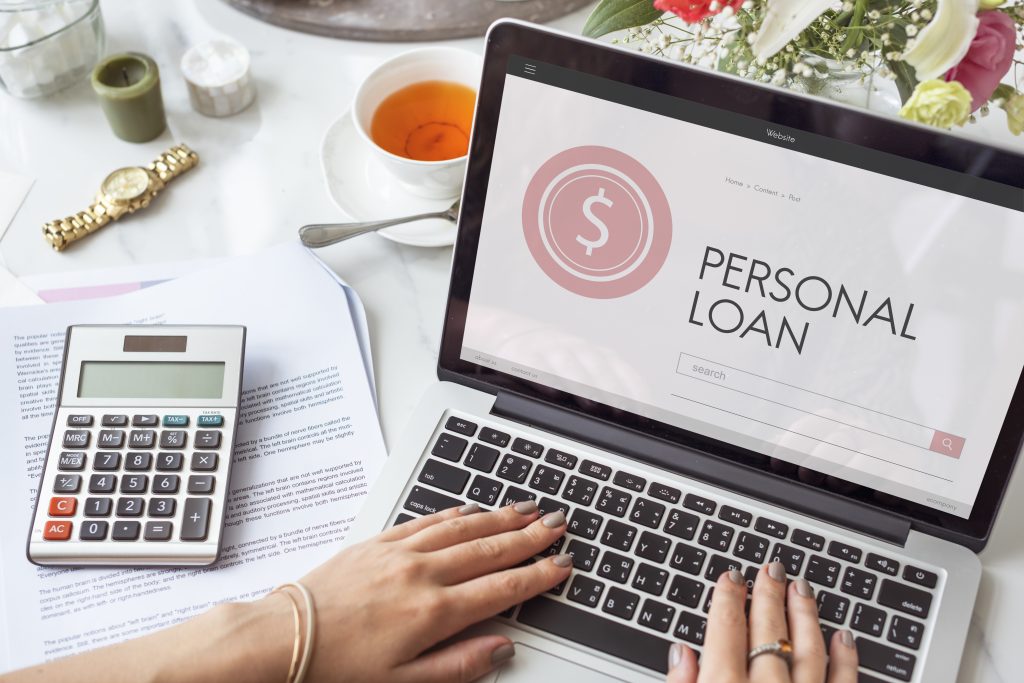
Imagine you’re planning a relaxing day at the beach, but instead of packing sunscreen and towels, you’re preparing to navigate the world of personal loans in Florida. With the right guidance and a little preparation, securing the perfect loan can be just as breezy as a day by the ocean. Whether you’re consolidating debt, funding a home renovation, or building an emergency fund, this comprehensive guide will help you understand the nuances of personal loans in the Sunshine State.
Exploring personal loans in Florida can be as refreshing as a day at the beach, but it’s important to know what you’re diving into. This vibrant state offers a variety of lending options that cater to different needs, whether you’re consolidating debt, upgrading your home, or padding your budget for those just-in-case moments. By getting familiar with the details of personal loans here in Florida, you can make choices that fit your life and steer clear of common traps.
In Florida’s lending market, you’ll find everything from big national banks to local credit unions and speedy online lenders. Big banks might offer lower rates and more loan types but expect stricter application requirements. Credit unions are great for their friendly service and flexible terms though they might not have as many loan options. Online lenders win on speed and convenience but take extra care to check they’re trustworthy.
Just like too much sun can lead to a burn, high interest rates and fees on loans can sting unexpectedly if you’re not careful. In Florida’s varied loan landscape these costs can quickly add up—from origination fees all the way through prepayment penalties—so always read the fine print closely. Interest rates also differ widely based on things like your credit score or income level; it’s crucial to shop around just like looking for the best spot on the beach.
Your credit score is key when applying for personal loans—it opens up better deals with lower interest rates if it’s high enough. In Florida (and everywhere else), lenders use this number heavily when deciding how much trust they place in borrowers’ hands financially speaking—a higher score means better terms typically offered by lenders. If your score isn’t where you want it yet don’t worry; there are still options such as secured loans or working with lenders who consider non-traditional credit histories.
When you’re looking into personal loans, one of the big choices you’ll face is between secured and unsecured loans. It’s a key decision that can really shape your borrowing experience and how comfortably you manage your finances. Let’s break down what each type means in simple terms.
Think of a secured personal loan as making a pinky promise with your lender, but instead of a pinky, you’re using something valuable like your car or house as a guarantee. This asset acts as security for the lender—they know they have something to fall back on if things don’t go according to plan and payments are missed. The upside? These loans usually come with lower interest rates and allow you to borrow more money, which is great if your credit history isn’t spotless or if you need a larger amount.
But remember, putting up collateral means exactly that—if payments are missed significantly, the lender can take what you’ve offered as security.
An unsecured personal loan doesn’t require any collateral—you’re free from risking any possessions. Here everything depends on how trustworthy lenders think you are based on factors like income level and credit score. Sounds easy right? However, because these loans are riskier for lenders (they have nothing but trust backing them), they might charge higher interest rates compared to secured ones or limit how much money they’ll lend.
The perk here is simplicity—there’s no fear of losing an asset should times get tough financially speaking—but be aware that not repaying this kind of loan still has consequences such as damaging your credit score severely which could make future borrowing tricky.
Making the choice between secured or unsecured personal loans depends largely on what financial tools you have at hand (like assets) and whether stability in repayment seems manageable within their respective costs and benefits structure. If having an asset ready makes sense for securing lower rates then go for it; otherwise enjoying less hassle by not tying down assets may suit better despite potentially higher costs involved.
Thinking about applying for a personal loan in Florida? It might sound complex with all the paperwork and requirements, but it doesn’t have to be. Imagine you’re planning a relaxed day at the beach; with some preparation and the right tools, securing that loan can be just as breezy. Whether you need funds for consolidating debts, sprucing up your home, or handling unexpected expenses, getting familiar with how loans work will help you find one that fits just right.
First things first: let’s get organized. Just like packing your beach bag with essentials from sunscreen to snacks ensures a smooth day by the sea, having your financial documents ready can make the loan application process much smoother. Lenders usually ask for proof of income—think pay stubs or tax returns—and details on your debts and assets. By having these at hand early on, not only do you speed things up but also show lenders that you’re serious about managing your finances responsibly.
You wouldn’t grab the first beach towel off the shelf without checking out a few others first, right? The same goes for loans. Interest rates and terms differ from lender to lender so comparing what’s out there is crucial—it could save you quite a bit over time. Feel free to negotiate too; think of it as haggling over that perfect spot under an umbrella at peak season—you never know what better deal might be available unless you ask.
All set? Now it’s time to submit your application. Make sure all sections are filled accurately: details about income sources or employment history matter more than ever here. Also have an idea of how exactly you plan to use this money since lenders often inquire about this part.
After sending off your application don’t hesitate to follow up regularly—just like checking if tomorrow’s weather will stay sunny enough for sandcastles helps avoid any last-minute surprises.

Getting a personal loan can feel a bit like learning to surf. It’s exciting, but there’s also a lot to understand—especially when it comes to interest rates and repayment terms. These are the big waves you need to master for a smooth ride in your financial journey.
Think of interest rates as the temperature on your beach day—it can make or break your experience. In loan terms, the interest rate is what you pay on top of the borrowed amount. A lower rate means less extra money paid over time, making your loan cheaper overall, while a higher rate can increase costs significantly.
The repayment term of your loan works much like ocean tides—they come in and go out and you have to plan accordingly. This term determines how long you have until you need to pay back what you’ve borrowed plus any interest accrued during that time. Opting for longer repayment periods usually means smaller monthly payments but more paid in interest over time; shorter periods increase monthly payments but decrease total interest.
Finding that sweet spot between favorable interest rates and manageable repayment terms is key—like packing just right for an all-day beach outing: not too heavy yet nothing essential forgotten. You might prefer getting rid of debt faster by choosing higher monthly payments if budget allows, or maybe smaller ongoing payouts fit better with other life expenses?
Luckily, there isn’t one perfect answer here—it really depends on what suits each person best given their unique circumstances. By understanding both these elements well enough though anyone should be able confidently navigate through options available finding one aligns perfectly own needs helping reach financial goals smoothly.
Think of your credit score as a key that can unlock the door to better loan options. This number shows lenders how reliable you are when it comes to paying back money. A higher score could mean lower interest rates and better terms, making it easier for you to manage your loan.
Credit scores range from 300 to 850. The higher your score, the more trustworthy you appear to lenders. If your score is above 670, that’s good; over 740 is excellent and might get you some of the best deals out there—like scoring a front-row seat at a concert.
If your credit isn’t top-notch yet, don’t worry. Even with scores in the 600s, you can still get personal loans; they might just come with higher interest rates or different conditions—think of it as having a view from further back at that concert—not perfect but still enjoyable.
Your credit score reflects how well you handle money. Factors like payment history and how much of your available credit you’re using matter here. Think about payment history as showing up on time—it matters. And keeping low balances on cards is like not overloading your plate at dinner; it keeps things manageable.
If your credit isn’t where you want it yet, think of improving it like getting ready for summer—you start working out or choosing healthier foods long before hitting the beach. Pay down debts and make sure there are no mistakes on your credit report to help boost those numbers gradually.
And remember: even if things aren’t perfect now, there’s always room for improvement and options available such as secured loans or alternative data consideration by some lenders—it’s all about having plans in place just in case.

Choosing the right personal loan in Florida can feel a bit like preparing for a perfect day at the beach. Just as you’d pack sunscreen, snacks, and an umbrella, having some expert advice on hand ensures you’re well-prepared for your financial journey.
Before jumping into the vast ocean of loan options, take a step back and think about what you really need. Are you trying to pay off debts, fix up your home, or maybe cover some unexpected bills? Knowing exactly what you want from a loan helps narrow down your choices to find one that fits just right.
Now that you know what kind of loan suits best for yourself; delve into details such as interest rates, fees and repayment terms which vary lender-to-lender is crucial reading fine print carefully Don’t hesitate to ask questions or seek clarifications on anything unclear. This might seem daunting but it’s essential to ensuring there no surprises later on.
A secured personal loan requires you to put up some form of collateral—like your car or home equity—as security for the lender. Think of it as leaving something valuable with a friend to show you’re serious about paying them back. Unsecured loans don’t need that; the lender is essentially taking your word based on your credit history and income.
Secured loans tend to offer lower interest rates since there’s less risk for the lender. But the downside is you could lose that collateral if you can’t repay. With unsecured loans, you don’t have to worry about that, but they often come with higher rates to compensate for the increased risk to the lender.
Your credit score plays a huge role—it’s like your financial reputation preceding you. A high score shows lenders you’re responsible with money and likely to make payments on time. You’ll qualify for the best rates and terms if your score is over 740.
But don’t worry if yours needs some work. Many lenders will still approve personal loans for people with scores in the 600s, though you may face higher interest rates. And there are alternative lenders who consider other data beyond just your credit score when making decisions.
First, get crystal clear on your “why”—is this loan for consolidating debt, funding a home project, or covering an unexpected expense? Knowing your goal will point you toward the right loan type and amount.
Then, shop around and compare rates, fees, and repayment terms from multiple lenders. Don’t just go with the first offer; negotiating can save you big over the life of the loan. And read every single word of the fine print so there are no surprises.
Finally, think about how the monthly payments will fit into your budget long-term. It’s easy to get lured in by low rates but make sure the overall costs and repayment timeline work for your situation.
A few strategies can help here. First, get a co-signer with stronger credit to boost your application. Or look into secured personal loans where you put down collateral—this reduces the lender’s risk so they may be more flexible on credit requirements.
You can also provide additional documentation that shows your ability to repay the loan, like proof of stable employment, low debt-to-income ratio, or substantial savings. Some lenders even consider non-traditional data like utility payments or rent history if you’re building credit.
As a long-term play, work on improving that credit score by paying down debts, removing errors from your report, and establishing a strong payment history over time.
There’s no one-size-fits-all answer, but in general, a shorter repayment term means paying more each month yet less total interest over the life of the loan. A longer term gives you smaller monthly payments, but you’ll pay more interest by the time it’s paid off.
Think about what fits your budget best right now while also considering your long-term financial goals. If you can swing the higher payments, a shorter term helps you get out of debt faster. But a longer term could make sense if you need low payments to free up cash flow for other expenses.
It’s a balance between what you can realistically afford each month versus how much you’re willing to pay in total interest charges. Running the numbers for your specific situation can help determine the smarter choice.